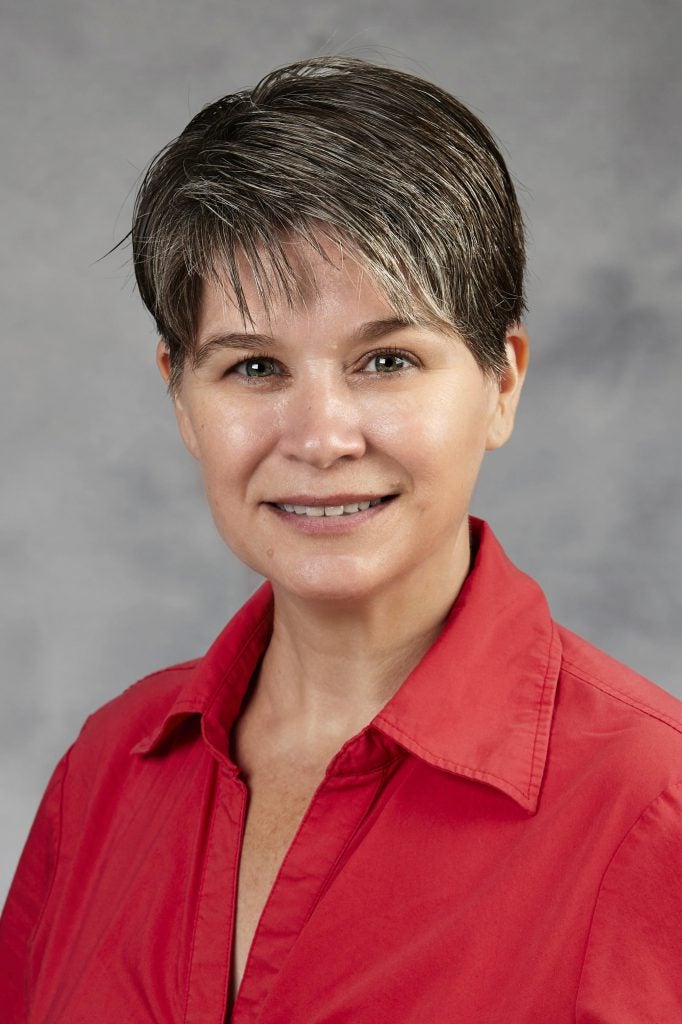In June, Sirajum, Expecting More’s intern, and I had the opportunity to interview Dr. Jennifer Vanderlaan, a PhD trained nurse practitioner and midwife who currently serves as the chair of the Lamaze International Research Workgroup. Our conversation was centered on the Lamaze International Six Healthy Birth Practices and the role of evidence-based childbirth education in shared decision making for pregnant and birthing people.

Yara: Can you start by telling us a bit more about Lamaze International and the six Lamaze healthy birth practices?
Jennifer: Lamaze is a nonprofit organization that was founded in the 1960s as a way to bring some sort of standardization to training for childbirth educators. Lamaze childbirth education is built around the Six Healthy Birth Practices that were adopted out of the evidence based medicine movement.
- Healthy birth practice number 1 is to let labor begin on its own. For a normal and healthy pregnant person, there’s no need for induction.
- Healthy birth practice 2 is to walk, move around, and change positions during labor. We know that this helps a woman progress a little bit faster in labor because it moves her pelvis around the baby as the baby’s moving through the pelvis. For most women, it also gives them a little bit of relief. Changing position changes the way that your muscles are pulling on tendons and pulling in bones and so it is more comfortable if you are up and moving then if you are in the bed. We also know there’s evidence that if you’re upright instead of laying down, labor goes faster.
- Healthy birth practice 3 is to bring a loved one, a friend, or a doula for continuous support. This comes out of all the evidence that we have, that when people are in labor, if they have somebody there to support them, even if the person isn’t as skilled as you would think in providing comfort measures in labor, the labor is more likely to progress normally. What’s really interesting about this particular one is that the first studies on doulas didn’t even have the doulas do anything. The doula just stood in the corner and they gave the doula a clipboard and just told them to stand in the room and to just be reassuring, and just being reassuring and never touching the person in labor was enough to increase the rate of normal birth which is unbelievable, and goes to show you just how much confidence plays a role in a person being able to labor normally.
- Healthy birth practice 4 is to avoid interventions that are not medically necessary. An intervention considered anything that you do that wouldn’t normally happen in labor. This one is built on our knowledge that interventions tend to build on each other. When people go into labor and they go to the hospital, the first intervention that they get is the external fetal monitor. It is pretty universal, the baby is monitored for the first 20 minutes in a lot of countries. What happens in the United States – that doesn’t necessarily happen everywhere else – is that the monitor doesn’t come off. And there’s no evidence that having that monitor on all the time is beneficial. It doesn’t reduce poor outcomes for babies, but it does increase rates of cesarean. We have to be thoughtful and use interventions only when there’s a reason to be using the intervention because even something that one might assume is as minor as having the monitor on the belly can change the outcome of life.
- Healthy birth practice 5 is to avoid giving birth on your back and follow your body’s urges to push. That comes from evidence that being in an upright or squatting position is better for the perineum and it can help prevent a long second stage, and it can help increase the number of people who give birth and maintain an intact perineum.
- Healthy birth practice 6 is keeping mother and baby together because it’s best for mother, baby, and breastfeeding. This comes from our evidence about skin to skin contact. A lot of hospitals now have that immediate skin to skin contact, but how much skin to skin contact you get is variable by hospital. It’s part of one of the baby friendly initiative steps, so this is actually pretty well adopted in the United States. We know that if you can keep the mom and baby together, breastfeeding goes better. And it’s not just that initial skin to skin contact. If you put the baby in the nursery instead of in the room with the new parent and somebody has to bring the baby for breastfeeding, you’re not able to respond to the baby’s cues, it can take a little bit longer to get the breast milk. Whereas if you put the bassinet for the baby close to the mom, she’s able to respond earlier to the cues and she gets her milk supply earlier. And with a better volume.
Those are the healthy birth practices, and Lamaze supports these not just because they improve health. We know that they’re associated with improved health outcomes for pregnant and birthing people, and for the babies. We also know that they’ve reduced costs. So it’s good for the health system.
Yara: Can you walk us through what the patient experience is like with Lamaze?
Jennifer: The whole purpose of Lamaze is perinatal education. For some women it might be towards the end of the second trimester and for most women, they’re going to start their education during the third trimester. The way that classes are structured are different around the country in order to meet the needs of the community. So if you go to the web pages for the women’s health center or the birthing centers at your hospital, you’ll find there may be classes that meet every week for four weeks, or there may be a Saturday eight hour class, or you may come Saturday and Sunday and they’ll call it the baby boot camp. The pregnant person has to identify a place where they want to attend childbirth education, they have to sign up for a class, there has to be room in the class, they have to pay for the class which may not be covered by their insurance (less than half of states cover childbirth education with Medicaid), and then they have to be able to get there. It also has to be at a time that is convenient for them, which isn’t easy for hospitals or community centers or health centers to do.
So there’s all those pieces, all the hoops you have to jump through to get care to start with, you have to jump through again to get childbirth education, which is part of the problem. There’s a list of content that you’re expected to cover as a Lamaze teacher, such as how to identify if you’re in labor, your options that you have in labor, comfort measures, the interventions, why they might be used, what do you need to know about them, and you’ll talk a little bit about newborn and breastfeeding. When you start labor is when you start using the tools that you’ve learned in the class to determine your level of comfort and how to recognize when to the hospital.
Yara: Can you tell us a bit more about how shared decision making relates to birth?
Jennifer: So the reason we wrote that paper about shared decision making is that in our conversations with the research team, we tried to figure out what it is that childbirth education does. Why is it that in some of these studies we’re seeing that people who have childbirth education have a reduced rate of cesarean? When you dig into the data what starts to be consistent is when studies break it into unplanned and planned cesareans and the difference is in planned cesareans. People who use childbirth education are less likely to plan a cesarean. Attending childbirth education gives you the information you need to make a decision and so you’re more likely to not plan that elective cesarean and if that’s what it is, then it is shared decision making. The reason that it works is because shared decision making is the next step out of informed decision making. Shared decision making sort of grew out of the idea that this isn’t one conversation, it’s a group of conversations that you have to have and it has to happen over time. And that doesn’t happen in a hospital. The studies about shared decision making are pretty clear that if you wait until the person is in the hospital to start doing shared decision making, you don’t reduce costs and you don’t change patient outcomes because how could you if they’re already admitted to the hospital? They’re already going to have that optional surgery.
So it has to happen before you get admitted to the hospital. And it has to happen over time. The things that people say help them or that they like about shared decision making is time between meetings to do their own research and find out about things and come back with more questions. And that’s exactly what childbirth education gives you, it gives people time to think about what they learned. It’s not so much about deciding this is the labor I’m going to have because nobody can decide that they’re not going to have an emergency cesarean, but it gives them the words to ask the questions that they have to their provider, and the confidence that they’re understanding what their provider is saying. One of the most interesting papers I read was a paper that talked about coercion or the pressure to have an induction or a cesarean. And what the authors found was that people who took childbirth education were more likely to recognize that they were being pressured to have an unnecessary induction or an unnecessary cesarean. Eugene Declercq’s work with the Listening to Mothers survey found that the most common reason for an induction was “my baby was due or close to my due date or after my due date” and when they looked at the data, what the women believed was not true clinically and whether that was what their providers had intended to communicate with them, or if they misheard, either way having education from a childbirth education class and understanding what different terms mean puts the pregnant person in a much better position to negotiate for what they want.
Yara: Can you tell us how evidence-based childbirth education can affect maternal health outcomes?
Jennifer: I have two separate studies going on right now. One, I’m using data from PRAMS, the Pregnancy Risk Assessment Monitoring System. And the other is a secondary analysis from a study in Pennsylvania of people who are pregnant for the first time. I know from the PRAMS data, first time moms who take childbirth education are more likely to put the baby to sleep on the back, they’re more likely to have the baby sleep on their own, they’re more likely to initiate breastfeeding, and they’re more likely to still be breastfeeding when they take the survey. So there’s this huge change in health behavior in caring for the newborn. But we also see a decrease in cesarean and use of an epidural, as well as an increased use in contraception and more specifically long acting reversible contraceptives, which is huge to a midwife.
Yara: The research has shown that Black women are three to four times more likely to die during childbirth. I was interested in learning whether there are disparities in receiving childbirth education?
Jennifer: Yes, we know that there’s disparities in access to childbirth education. But what I keep finding in the data is not that women of color are necessarily less likely to attend childbirth education. In my PRAMS data, I don’t see a decreased use of childbirth education among women who are Black. I do see a decrease among women who reported Asian ancestry. The women who reported that they were Black had a higher odds of attending childbirth education which shows us that they want to participate in childbirth education. In fact, they’re probably hyper aware of their increased risk and are doing anything they can to reduce that risk. But in a lot of communities, there’s going to be overlap with race and ethnicity, poverty, and use of Medicaid, and use of Medicaid was strongly associated with not using childbirth education. And it may be because the PRAMS data only includes four states in this question. And those four states don’t cover childbirth education with Medicaid. When I’m controlling in the models, what’s happening is I’m controlling for all the different factors that might be associated with not having childbirth education. I put in race and I also put in Medicaid and I also put in intention for pregnancy because half of our pregnancies are not intended. And when you control for Medicaid and you control for intention of pregnancy, there is no disparity in access to childbirth education for women who reported that they were Black, but we know that Black women are more likely to be using Medicaid than white women, then there is a disparity. There’s nothing genetically or culturally about a woman of color that makes her not go. It’s the system that we built that is restricting access because she has Medicaid or because she is not able to attend childbirth education classes.
Yara: And how has COVID-19 changed Lamaze or childbirth education?
Jennifer: We have a lot of childbirth educators who have changed their classrooms to online classrooms, which is meeting the needs of a lot of communities. It doesn’t meet the need for every community though because in order to flip your classroom onto an online platform you need to live in a community where people have access to the internet. We have an underdeveloped infrastructure in the United States. Our rural areas and areas in poverty are much less likely to be able to have access to online classes and that’s pretty much all that we can offer right now. We also have, through Lamaze, a webinar where you can purchase a class and can go and watch the video and that maybe something people can do on their phone with a little less data plan.
Yara: Thank you for taking the time to speak with us today.

Dr. Jennifer Vanderlaan, MPH, CNM is an assistant professor at University of Nevada, Las Vegas’ School of Nursing. She is a member of the Nevada Maternal Mortality Review Committee and serves as the Chairperson for the Lamaze Research Workgroup. Her research work examines the quality and safety of maternity care focusing on such aspects as the access to care, identification of maternal risk, and use of techniques to promote physiologic birth – such as childbirth education.



